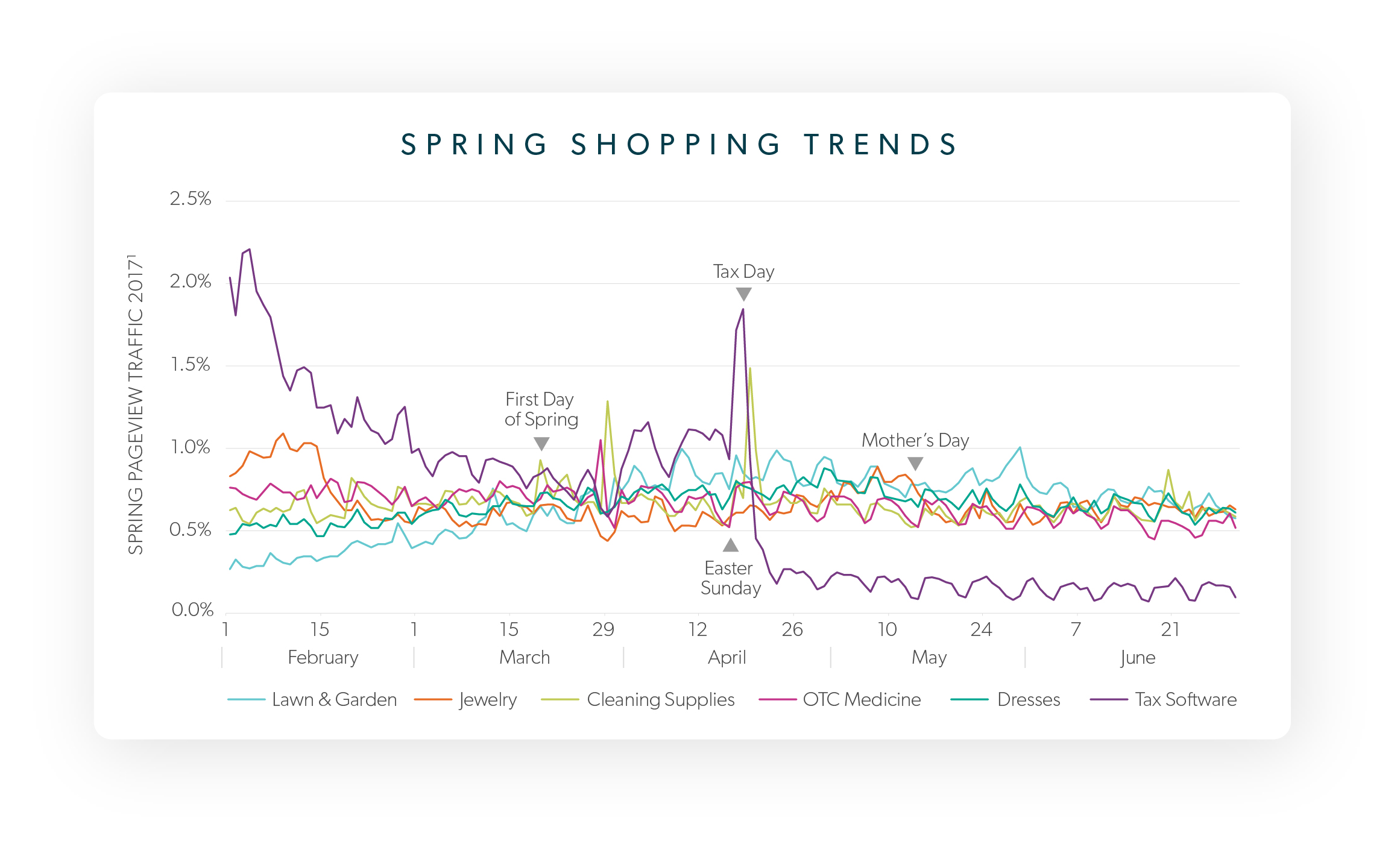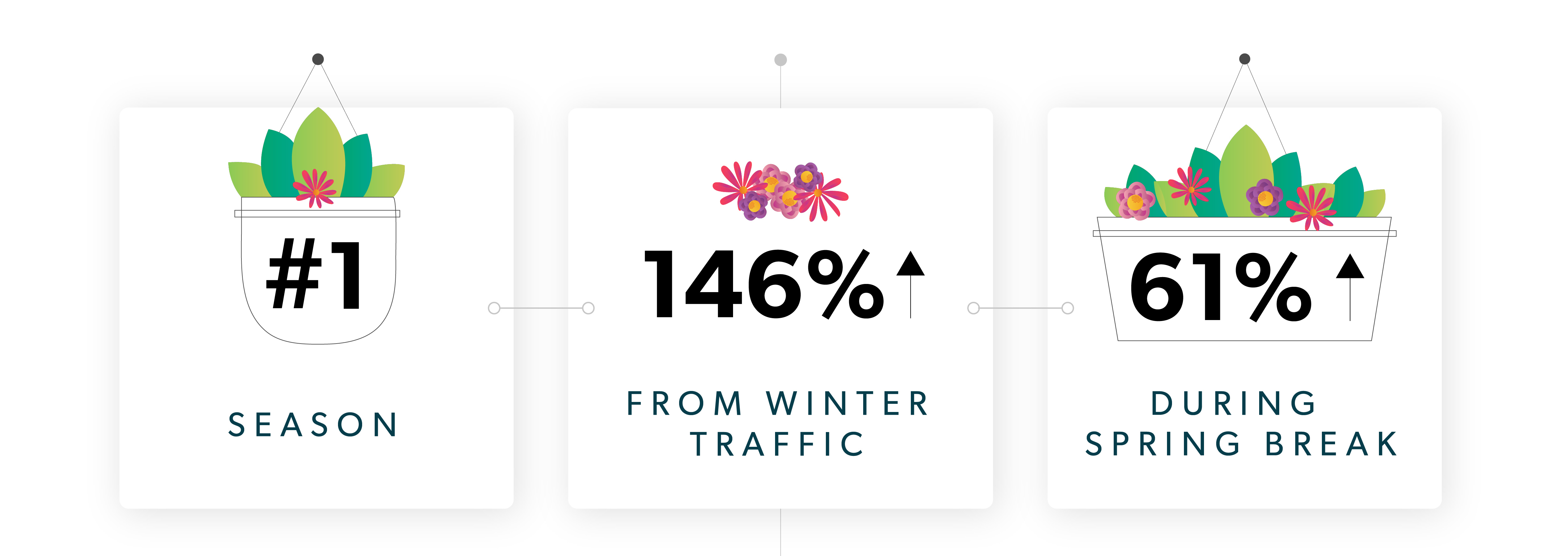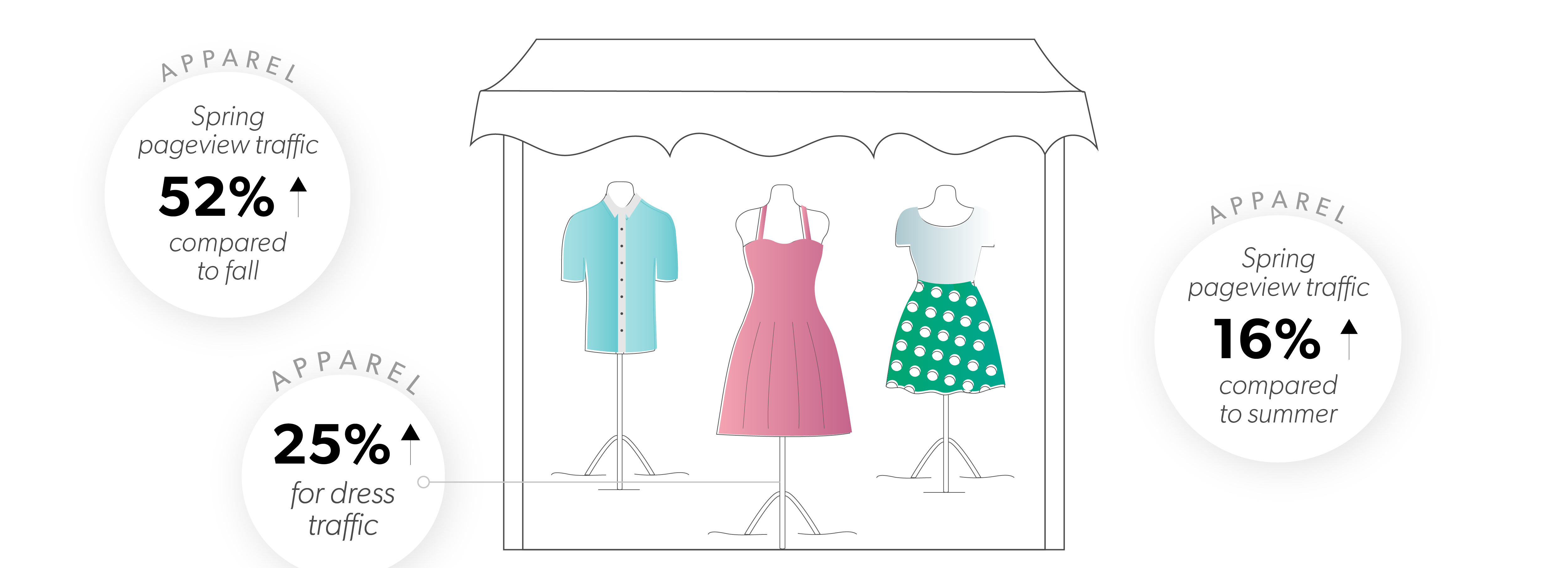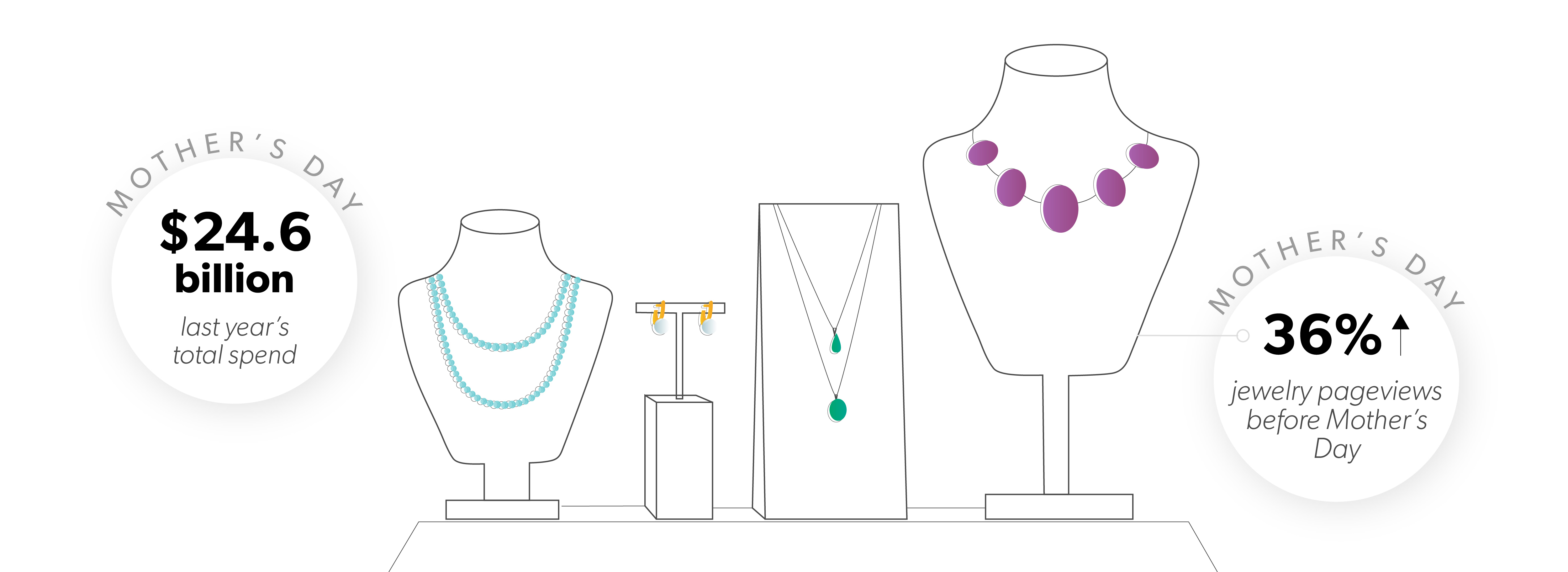April 3, 2018
Spring is a time for fresh starts. The promise of warm weather has consumers thinking about outdoor activities and new wardrobes. For those in the retail space, spring is the biggest shopping season following the holidays.
Whether it’s for spring cleaning or prom, the spring months present opportunities for brands in a variety of industries to appeal to shoppers. Based on insight from our network of 5,700+ websites, here are the trends and shopping habits to pay attention to this spring season.

1. Spring sprucing
With longer days and warmer weather, consumers are more motivated to complete household chores and repairs. One of the first places they start is in their own lawns and outdoor spaces.

Spring is the #1 season for traffic to products in the lawn and garden categories — it reaches 146% higher in the spring as it does in the winter months. Over spring break in mid-March (defined as March 11-17 in our analysis), lawn and garden traffic saw its highest surge, up 61% from the weeks prior. Also up 61% from the winter months: searches for over-the-counter medications, likely indicative of the start of allergy season.
Not surprisingly, the spring cleaning trend applies within the home, as well. Pageview traffic for cleaning products is 13% higher than it is in the fall months and 18% higher than it is during the winter.
If you’re in the consumer packaged goods industry, think about how seasonality can inform your marketing strategy. There is a big demand for cleaning supplies and lawn and garden care products starting as early as February and continuing into May.
2. Warm weather wardrobe
At the first sign of sunny days, everyone ditches the turtlenecks and boots for sundresses and shorts. And for some, last year’s fashion just won’t do. Dresses emerge as one of the hottest items to stock up on in the spring. Per our data, traffic for dresses is 16% higher in spring than it is in the summer and 52% higher than it is in the fall.
If you sell dresses, pay attention to special events in April and May. In late April, dress traffic increases 25% as students everywhere prepare for prom and graduation.

3. Spring shopping holidays
Starting with St. Patrick’s Day and ending with Memorial Day, there are a number of spring holidays that are important to certain groups of consumers. The two major holidays still to come include Mother’s Day (May 13th) and Memorial Day (May 28th).

Perhaps surprisingly, Mother’s Day is often a bigger shopping holiday than Valentine’s Day. Last year, consumers spent $24.6 billion on the holiday. Our data shows that jewelry searches increased 36% ahead of the holiday last year, with most traffic coming in the one to two weeks prior to Mother’s Day Sunday. Shoppers seem to plan ahead for Mother’s Day, so marketers and advertisers should consider running campaigns as early as late April.
Memorial Day weekend signals the beginning of summer — and flash sales. We see spikes in two contrasting categories over the long weekend — lawn care and televisions. It appears that some shoppers are taking advantage of the extra day off to work in the yard or host barbecues, while others are taking advantage of holiday sales to purchase big ticket items like television sets.
4. Mad dash to tax day
No one would consider tax day a holiday, but in the U.S., there is a noticeable spike in tax software purchasing in the spring. While this overall spike may not be surprising, what is interesting is that the spike occurs in the weeks right before the mid-April deadline, indicating that the general population prefers to procrastinate on filing taxes. In fact, the week of tax day saw a 50% increase in pageviews for accounting software, and this single week accounts for nearly one-fifth of all tax prep software traffic for the season.
What can marketers and advertisers do to increase awareness and sales during the spring months? There are clear events and trends during spring that relate to shopping spikes. If you sell products in any of the categories covered in this blog, use our insights, along with your own transaction and website data, to inform the timing, messaging, and targeting of your spring retail strategy.
To see more spring shopping trends, download the full infographic.





